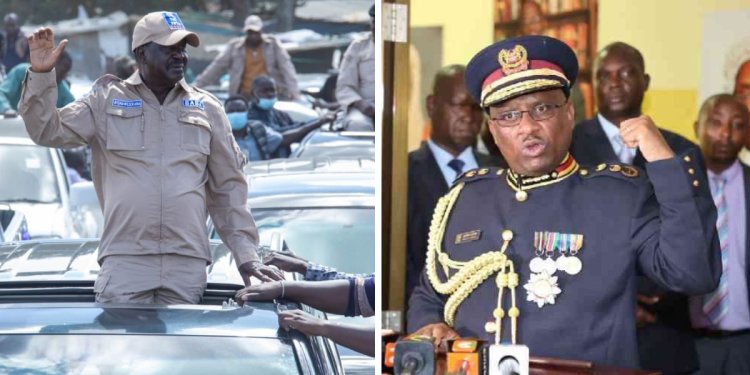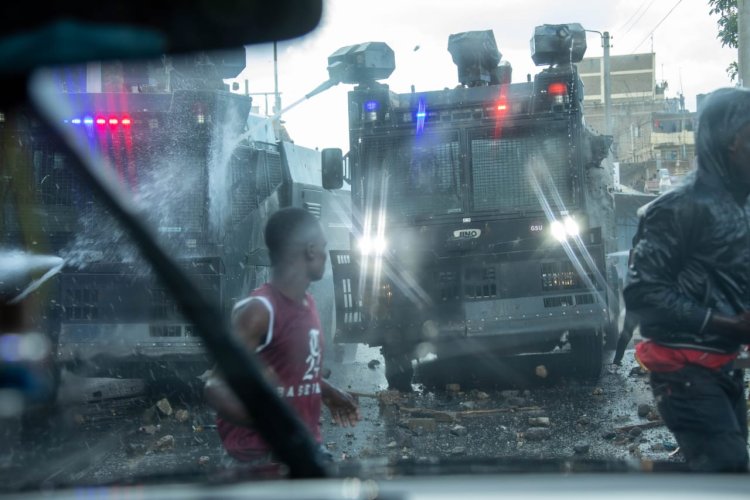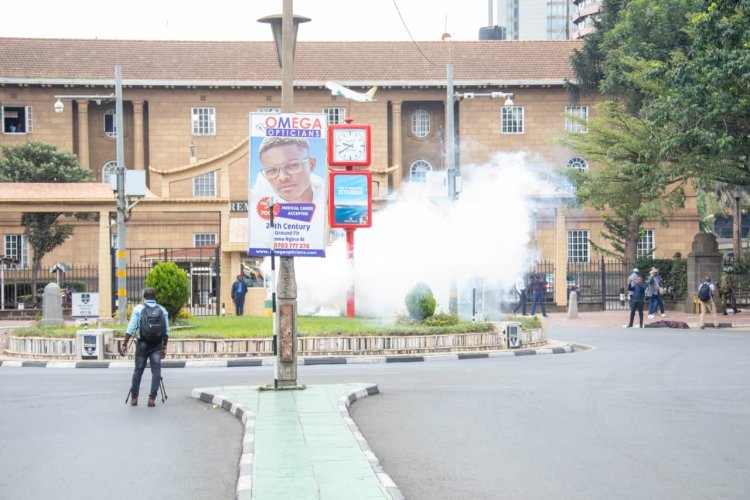Police Blame Azimio For Violent Protests On March 20
Inspector General of Police Japhet Koome maintained that the coalition had held illegal demonstrations in the two regions...

The National Police Service (NPS) on Tuesday, March 21 criticised the Azimio la Umoja-One Kenya alliance for failing to control their supporters during the Azimio mass protests in Kisumu and Nairobi.
Inspector General of Police Japhet Koome maintained that the coalition had held illegal demonstrations in the two regions, allegedly protesting against what they termed as a high cost of living, but noting that their sole aim was to invade the State House.
Koome further noted that the organizers failed to adhere to their wish for a peaceful demonstration, which was witnessed by running battles pitting protesters armed with stones and police officers which ground activities of the two cities to a halt.

A photo of some of the police water cannon trucks used on March 20, 2023, mounted on a police water cannon truck. /RAILA ODINGA
"Apparently, what the organizers purported to be a peaceful demonstration turned into violent crime scenes with protestors engaging in running battles with, and stone-throwing at the anti-riot police officers, barricading roads thus hindering freedom of movement for law-abiding citizens," Koome stated in part.
"The unwarranted day-long stand-off that was witnessed in Nairobi and Kisumu yesterday, amounts to nothing short of violence against police and economic sabotage. Despite their provocation against police, our Officers executed their national security mandate professionally; upholding the rule of law and utmost respect for human rights."
Koome revealed that the police officers used force gradually beginning with the lowest threshold which is show-off force and barely reinforced by water cannons and lobbying teargas canisters to prevent the protestors from accessing central business districts of Nairobi and Kisumu, as well as protected areas, to prevent further damage.
However, despite their restraint and action within the law as well as effectively containing the situation, Koome exposed rioters who attacked Maseno Police Station in chaotic scenes culminating in the killing of one male third-year student at Maseno University by the police officers, who used live bullets to disperse the rowdy youths and other protesters who had overpowered them.
According to preliminary reports, the student was shot in the neck after protesters invaded Maseno Police Line in Kisumu. He was rushed to Coptic Hospital, where he was pronounced dead on arrival.
"In compliance with the Constitution and the National Police Service Act of 2011, we have commenced our Investigations into the matter.
"In addition, we remain open to external scrutiny by independent constitutional agencies as we strive to promote and practice transparency and accountability within the Police. We want to remind members of the public that no one is above the law," Koome added.
IG Koome also condemned the unwarranted violence that was meted out against the officers discharging their official duties. He went on to reveal that a total of 31 police officers were injured during the protests.
"We wish to inform the public that during yesterday's demonstrations, we arrested 25 people, while 7 Officers were injured in Nyanza; while in Nairobi, 10 Police Vehicles were damaged, 24 Officers were injured while persons arrested were 213," he went on.
In Kisumu, protesters engaged police officers in running battles when the two camps retreated and shared lunch. However, in Nairobi, most of the police officers were injured on Outering Road where protesters had barricaded the road with stones and burning tyres.
Among the people who were injured at Outering Road are Embakasi police boss James Makau and his junior colleagues.

Teargas outside the Supreme Court of Kenya buildings on March 20, 2023. /FILE

 admin
admin 




